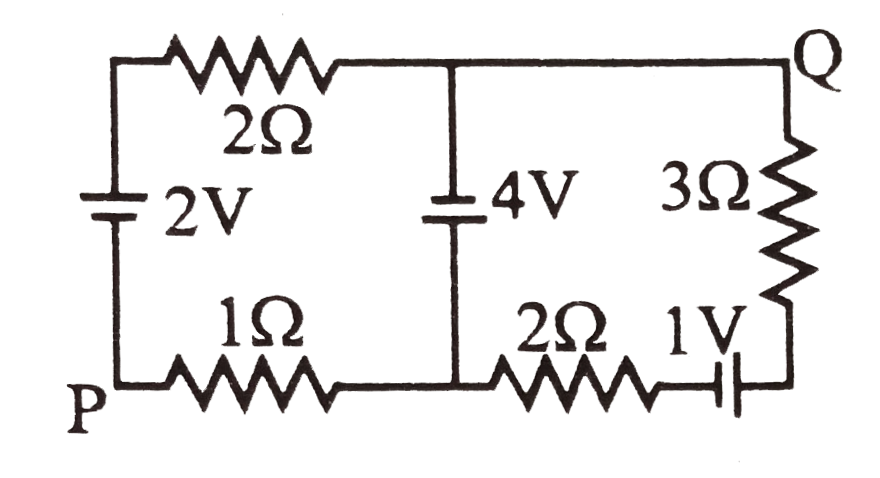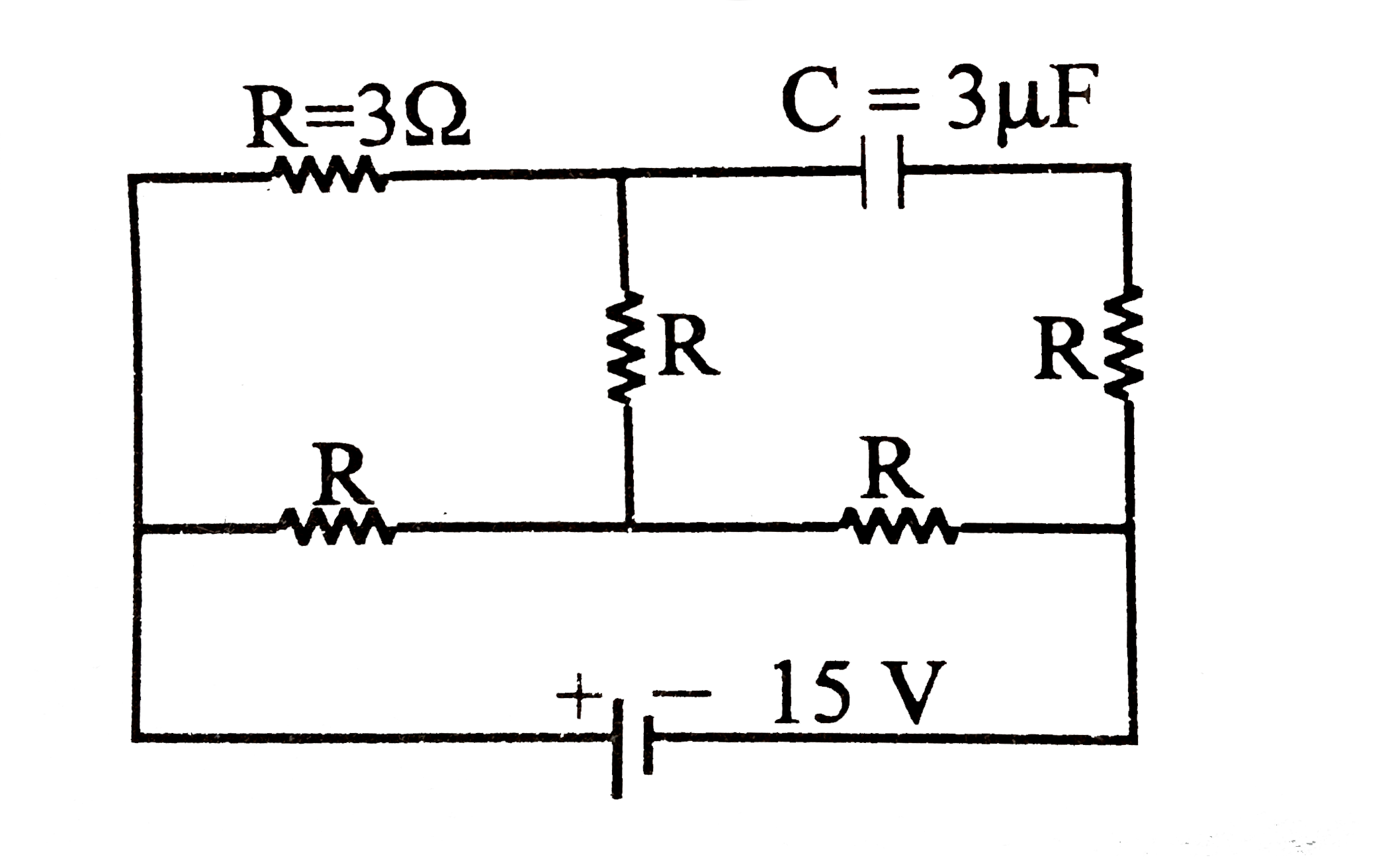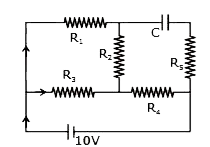In the circuit shown, each resistance is 2Ω. The potential V1 is an indicated in the circuit. What is the magnitude of V1 in volt ?

Video Solution
Text Solution
The correct Answer is:9
The resulting circuit can be drawn as shown. No current will flow into the earth.

I=(12−5)/7=1A,VA−2i−2i−5=V1,butVA=0
so V1=−9V
|
Updated on:21/07/2023
Topper's Solved these Questions
- BOOK - CENGAGE PHYSICSCHAPTER - ELECTRIC CURRENT AND CIRCUITEXERCISE - Comprehension35videos
ELECTRIC CURRENT AND CIRCUIT
- BOOK - CENGAGE PHYSICSCHAPTER - ELECTRIC CURRENT & CIRCUITSEXERCISE - Kirchhoff s law and simple circuits15videos
ELECTRIC CURRENT & CIRCUITS
- BOOK - CENGAGE PHYSICSCHAPTER - ELECTRIC FLUX AND GAUSS LAWEXERCISE - MCQ s38videos
ELECTRIC FLUX AND GAUSS LAW
Similar Questions
Knowledge Check
- Question 1 - Select One
In the circuit shown the cell is idea with end =15V each resistance is of 3Ω The potential difference the capacitor is
 AzeroB9VC12VD15V
AzeroB9VC12VD15V - Question 2 - Select One
In the circuit shown, what is the potential difference VPQ?
 A+3VB+2VC−2VDnone
A+3VB+2VC−2VDnone - Question 3 - Select One
In the circuit shown, what is the potential different VPQ ?
 A+3VB+2VC−2VDNone of these
A+3VB+2VC−2VDNone of these
If the resistance of each branch of the circuit shown below is 1Ω , then the equivalent resistance of the circuit between the points A and B is
 View Solution
View SolutionFor the given circuit, if internal resistance of cell is 1.5Ω thenVp−Vq is equal to:
 View Solution
View SolutionIn the circuit shown, the cell is ideal , with emf=15V. Ecah resistance is of 3Ω. the potential difference across the capacitor is
 View Solution
View SolutionIn the circuit shown in fig. the cell is ideal with emf 15V. Each resistance is of 3Ω. The potential difference across the capacitoro in steady state is
 View Solution
View SolutionIn the circuit as shown, it is given that R1/R2=1/2 and potential at O is V.
 View Solution
View Solution



